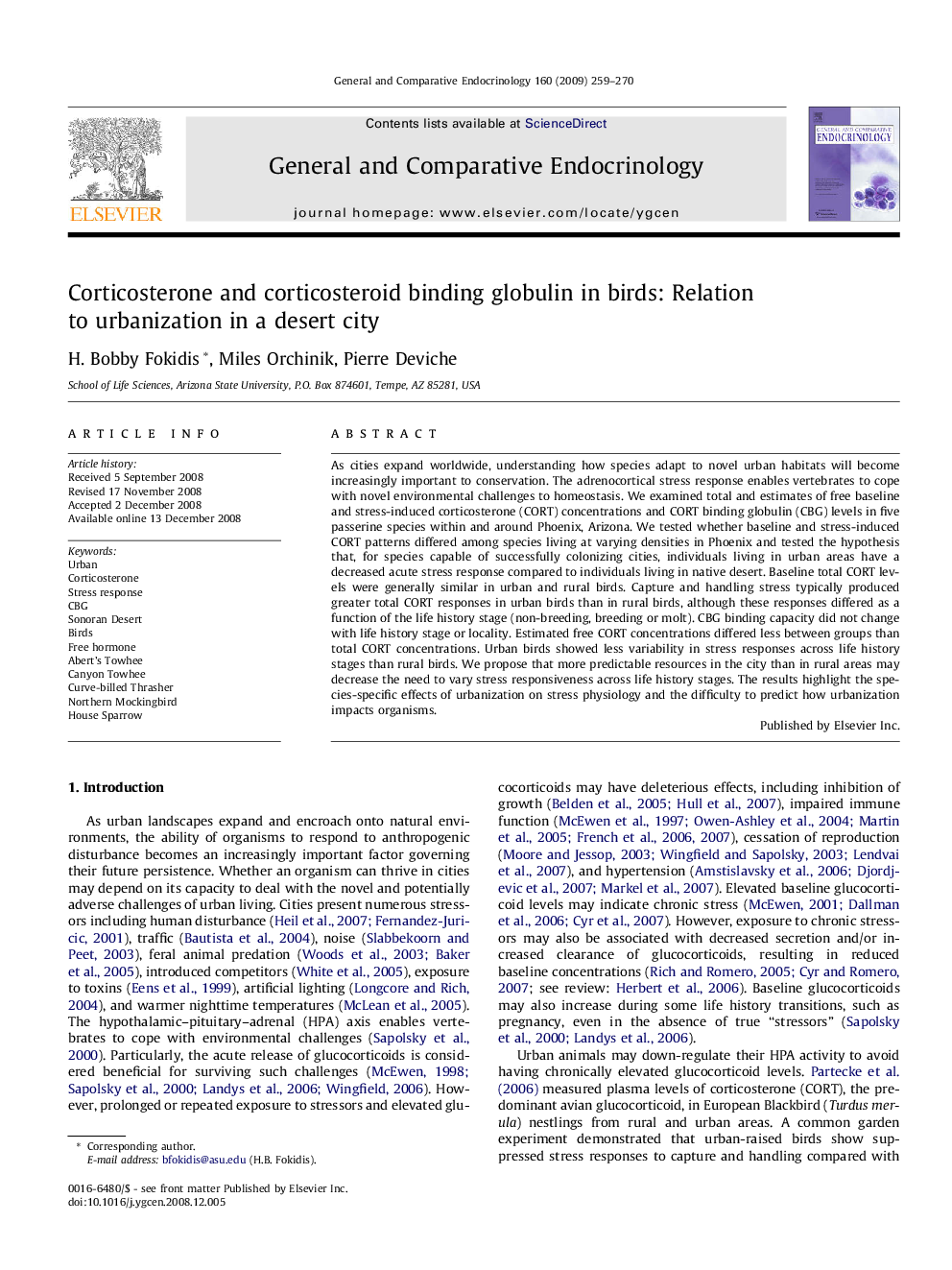| Article ID | Journal | Published Year | Pages | File Type |
|---|---|---|---|---|
| 2801292 | General and Comparative Endocrinology | 2009 | 12 Pages |
As cities expand worldwide, understanding how species adapt to novel urban habitats will become increasingly important to conservation. The adrenocortical stress response enables vertebrates to cope with novel environmental challenges to homeostasis. We examined total and estimates of free baseline and stress-induced corticosterone (CORT) concentrations and CORT binding globulin (CBG) levels in five passerine species within and around Phoenix, Arizona. We tested whether baseline and stress-induced CORT patterns differed among species living at varying densities in Phoenix and tested the hypothesis that, for species capable of successfully colonizing cities, individuals living in urban areas have a decreased acute stress response compared to individuals living in native desert. Baseline total CORT levels were generally similar in urban and rural birds. Capture and handling stress typically produced greater total CORT responses in urban birds than in rural birds, although these responses differed as a function of the life history stage (non-breeding, breeding or molt). CBG binding capacity did not change with life history stage or locality. Estimated free CORT concentrations differed less between groups than total CORT concentrations. Urban birds showed less variability in stress responses across life history stages than rural birds. We propose that more predictable resources in the city than in rural areas may decrease the need to vary stress responsiveness across life history stages. The results highlight the species-specific effects of urbanization on stress physiology and the difficulty to predict how urbanization impacts organisms.
